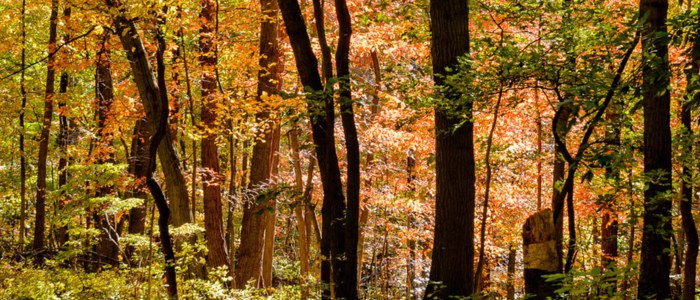The State We're In
Cut taxes, not trees
By Alison Mitchell, Executive Director, New Jersey Conservation Foundation
Every remaining patch of forest in New Jersey matters. From protecting water quality and wildlife to carbon storage and cooler temperatures, trees are absolutely vital to our wellbeing. Despite these values, longtime policies push landowners to cut them down. There’s a better alternative, but most people don’t know about it
Many forested properties in New Jersey qualify for what’s called “woodland assessment” – a steep property tax discount intended to help farmers and woodland owners keep their land rather than selling it for development. New Jersey has some of the highest property taxes in the nation, so offering some relief to encourage people to keep land in its natural or agricultural state makes sense. To get the lower assessment, landowners originally had to have a “woodland management plan” and demonstrate commercial activity like selling firewood or other wood products – achieved by cutting trees.
The results are pretty devastating for the regeneration and survival of native forests. When sunlight hits the disturbed forest floor after a harvest, invasive species often take over, not native saplings. This is because of an overabundance of white-tailed deer – at least 10 to 20 times what the forest can tolerate – which eat any native tree seedling except birch, red maple, and pitch pine.
In this state we’re in, logging under a traditional “management” model often leaves forests degraded and less capable of supporting sensitive forest interior species of plants and animals.
Recognizing this problem, the State adopted the Forest Stewardship Act in 2010, allowing New Jersey landowners to qualify for the same tax benefits without selling any wood products. Under the new law, landowners may focus on ecological management instead of the sale of wood products.
Unfortunately, many landowners don’t know this option exists, and many local tax assessors aren’t familiar with it. It’s not their fault – this alternative approach hasn’t been promoted much.
One landowner who has taken advantage of the 2010 Forest Stewardship provision is Chris Hepburn, who owns land in northwestern New Jersey. Like many, she initially followed the standard process for a woodland management plan that included timber harvesting.
“At first, we had to take down trees and I never did quite understand why,” she recalls. “I became more and more against it. It didn’t make sense to me. We’re not a timber operation, so why would we interfere with native trees growing?”
That doubt turned to alarm when Hepburn discovered the extent of the logging called for when her plan was revised. “One day I found that every black birch tree along my path was marked to be taken down – trees that are phenomenal for wildlife,” she says.
Hepburn found another forester who was willing to write a different, new type of Forest Stewardship Plan – one that does not require the generation of wood products – and it was approved in 2020. Instead of harvesting wood products, her plan now focuses on removing invasive Japanese barberry and protecting her native tree seedlings and saplings from deer. It’s an approach that fits her desire to regrow the forest for the future and to nurture the ecological values it offers.
Forest owners across the state deserve to know that ecological restoration is a viable pathway to property tax relief. In a time of climate crisis and biodiversity loss, every acre of healthy forest matters. Hepburn is now on a mission to help inform and assist others and runs a symposium each year called “Women and Their Woods” to educate forest landowners. It’s not restricted to women – all are welcome!
Visit https://www.ridgeandvalleyconservancy.org/women-and-their-woods to learn more about Hepburn’s program, and check out https://njforestry.org/stewardship/ if you own forest and want to get a plan started that focuses on restoration.
To learn more about how you can help preserve New Jersey’s natural resources, visit the New Jersey Conservation Foundation at www.njconservation.org or reach out to us at info@njconservation.org.
About the Authors
Alison Mitchell
Executive Director
Michele S. Byers
Executive Director, 1999-2021
John S. Watson, Jr.
Co-Executive Director, 2022-2024
Tom Gilbert
Co-Executive Director, 2022-2023
View their full bios here.
Filter
Get The Latest News
From The Garden State
In the
News

